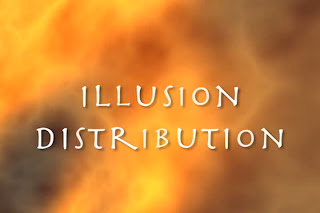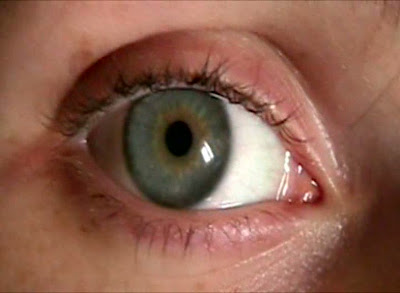You've each randomly selected a DVD, and should blog on the film opening you've received, noting the following (using sub-headings in your blog post would be a good idea); follow the same instructions for a second film opening (you'll need info on both for
the linked vodcast task):
 |
| Screenshot from a past student company ident |
- BASIC INFO: Title (director, year), budget + UK/US box office (if available). Set each detail out on a separate line, and change the font from default (+ bold + colour, NOT background colour). Making the film title + director name into IMDB, Wiki (etc) hyperlinks is always useful, and if you can find the opening on YouTube (ir a trailer) that does no harm either
- Include 'Length of opening sequence' and fill this in later
- List the company idents (click here for an example if unsure what an ident is)
- Note any other companies listed in the opening credits that didn't have idents included
- Note the titles - the specific wording. You don't need to note the names (except for director credit like A Shane Meadows Film, just the roles and how they're worded. Does the director get two credits?
- Denote (list) the first 20 shots (what shot type), plus any additional media language you can name at this stage (look at your list of terminology or notes from lessons). Where you can, state why you think this shot was chosen (if you thin k there was a better choice available, say so and explain why) Plentiful screenshots would be useful.
- Watch the opening all the way through. Note how long it is and add this info to the start of your post.
- How does the opening sequence end? Is there a fade out or some other transition?
- BRIEFLY summarize the exposition provided to the audience (ie, background information): do we now know the time period, location, genre, biography of the main character/s (an/protagonist), basic plot? It helps to note how you know; as filmmakers you will need to think about how much to communicate to your audience and how to do this.
 |
| An ECU, presumably used to emphasize emotion + compel the audience to feel this too |
- We'll be looking at some of your examples in class, and then you'll work in pairs to compare and contrast your findings. Two pairs will then share their findings and present their findings in the form of a vodcast - for which you will need screenshots from all 8 films to illustrate your findings. This will be a major step towards proving you've researched and understood the media language commonly employed in film openings. These are not rules, but rather conventions seen in many. The unusual exceptions are also useful, as they may help you justify some unusual choices when it comes to your own films.
You could be
browsing through blogs from
2009,
2010,
2011 and
2012 to give you a better idea of what a final blog might look like.
You might have noticed that I tend to put links into
bold to ensure they are noticed; you should too.


No comments:
Post a Comment